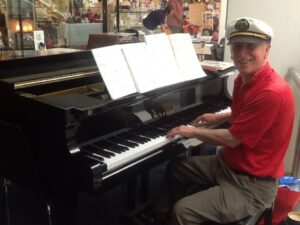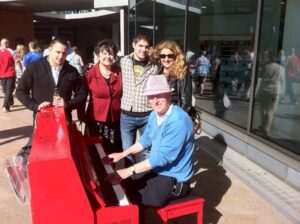Learning & Doing
By Dr Charles Margerison
Psychologist
Introduction
Each evening, I open my iPad while sitting at the piano. I go to YouTube, and find videos of people who offer intermediate level lessons on how to play the piano. There are many excellent tutors who share their techniques on ways to play jazz, blues, waltzes, country, ballads, rock and roll styles and classical music. Each of the videos last between 10-20 minutes. I watch the demonstration and then play the music in a similar style.

Of course, I make errors. So, I return to the video and play it again. I stop the video at the place where I was making the mistake and play that section until I can repeat it. Within about thirty minutes, I can see considerable improvement.
The reason for sharing this personal experience is that there is an important lesson for teachers and students. The process I am using reduces the gap between learning and doing.
It is very different from the traditional approach, which involves learning to read music, and to play scales. Both are important, but there is invariably a long gap between the lesson and the application.
The Learning Gap
In other education formats, I have found the gap between gaining information and applying it, was too widespread. For example, I have sat in many lectures that last forty minutes and more. Afterwards, there was no opportunity to apply the points raised. Therefore, the information given, however good, was wasted.
Four Levels
For piano, and other skills development, I use the principles of –
- Observation – by watching an expert
- Imitation – by copying their method.
- Repetition – by practicing on a regular basis, I reinforce the learning.
- Application – by performing at concerts.

I have found this process very helpful. It has improved my confidence, as the time between learning and doing is reduced. I improved my skills at a quicker rate and gained far more satisfaction.
It is an example of action learning. Instead of trying to understand the whole song, I can take action and play a few bars. I convert inputs into outputs very quickly.
Summary
This approach can be applied in other forms of learning. Some language teachers use the approach to help students develop their understanding of a foreign language. However, some traditional tuition, such as the exercise of memorizing verbs and grammar, can separate the learning from the doing application.
Teachers increasingly are becoming facilitators of learning. This means creating project tasks and exercises where students work as a team to learn by taking action. Problem solving discussion groups will help students learn with and from each other.
In this way, they can help each other shorten the period between knowing and doing, via action learning, and by providing to each other, examples of what works.
At the end of each project, students should be asked to write a note on ‘what did learn about myself from taking action’?
.









